This was published 6 years ago
Aarhus: Denmark's second city is making its mark as a cultural city of art and soul
By Jamie Lafferty
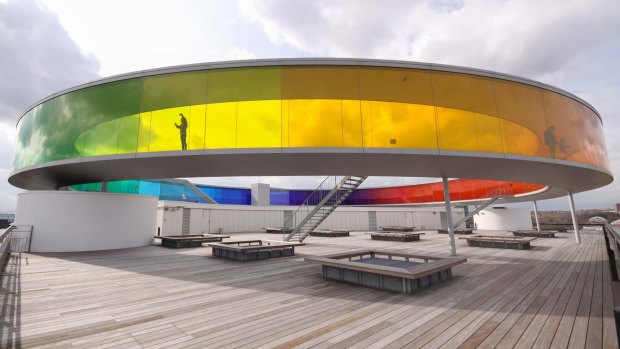
The Aros Aarhus Kunstmuseum in Aarhus, Denmark, is one of the largest art museums in northern Europe.Credit: Shutterstock
I like to think I know the world. Not all of it, of course, but more than most. In a pub quiz, my specialist subject would be geography; I pride myself on identifying flags. Capital cities? No problem. Do you know that the currency of Guatemala is the quetzal, named after an elusive and exotic bird? I do.
But for all this rarely useful information floating around in my head, before 2017, if you'd asked me in which country you find Aarhus, I would not have known. I'd have guessed Scandinavia, or perhaps northern Germany, but if the money was on the line, I'm not sure I would have been willing to bet.
Having now been to Aarhus, this year's joint European Capital of Culture (alongside Paphos in Cyprus) it's all the more embarrassing that I knew so little about Denmark's second city. And yet, while I feel a pang of shame at not knowing better, I have a feeling that I might not the only one a little in the dark.
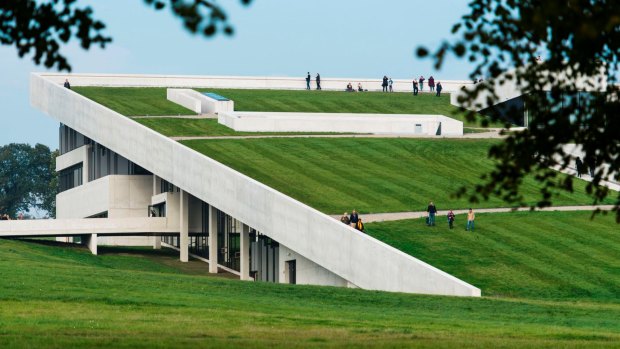
Moesgaard Museum in Aarhus, Denmark.
Being European Capital of Culture serves different purposes for different hosts. All ostensibly offer a rich calendar filled with a spectrum of artistic and cultural highlights, but the reasons for the huge necessary investments (more than $85 million in this case) can vary greatly. In 1990, Glasgow used it to essentially say: we're not Edinburgh, we don't claim to be, but we're nowhere near as stabby as you fear. It worked – the city now is unrecognisable and while it's hard to measure exactly how much the Capital of Culture year influenced its change, few would deny it was a catalyst. Similarly, in Liverpool in 2008, the idea wasn't to raise profile, but rather to have visitors look at it in a different light.
Aarhus may be the second largest city in Denmark, but its goals are quite different. It simply seeks to let the wider world know that it exists at all – and then surprise them with its cultural riches. This isn't the first time the title has come to Denmark, nor will it be the last: Copenhagen won back in 1996 and it will return to a yet-to-be-decided city in an impossibly futuristic-sounding 2032.
The team behind the Aarhus project is headed by CEO Rebecca Matthews, a Brit who worked in Australia for many years, both for Sydney Opera House and the British Council, before taking up this post. Like many of her colleagues, she has a five-year contract in Denmark. This year is the fourth of those, which is to say most of her work has been preparation. Some of the organisers will stay on through 2018 to analyse the year, to go through all the accumulated feedback and data, wrap up the budget, and see what worked and what didn't. With a thing like this, though, where so much is intangible or subjective, what counts as success and failure?
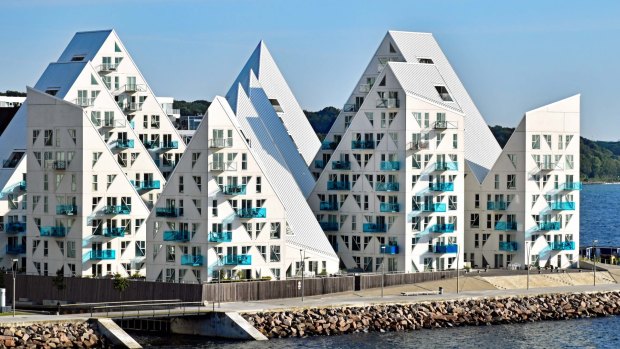
Residential complex "Isbjerget" (Iceberg) in Aarhus, Denmark. Credit: Shutterstock
Matthews talks about legacy and civic engagement and pride in the city. Moving out of Copenhagen's shadow. The title is actually being shared around the region, and this is the first time all of its 19 municipalities have come together for a shared project – that in itself is something to celebrate, she says. She talks too about visitors not coming just this year, but again in the future. Success will also be partially measured by hotel and conference bookings, and whether the low-cost carriers currently flying to Aarhus maintain or even increase their frequencies. Before all this, more than 10,000 local people were consulted over a five-year period to find out what they would hope to gain by getting the title. "They said: we want it to be a great year of arts and culture, but we also want to think about things for the world – we want to look at sustainability, diversity, and democracy," explains Matthews.
What would failure look like? "If people are indifferent to it," says the CEO. "You can love the year or you can hate the year, but to come away and say 'I don't know – I don't feel anything.' That, for me, would be the biggest failure."
To counter that, there are 12 months of events and shows, installations and performances, happening all across the region. Focal points include the excellent Moesgaard Museum, which was a big draw before 2017, but will be busier than ever with events such as The Red Serpent, a theatrical rendition of a Viking legend. Elsewhere, the ARoS Aarhus Kunstmuseum has already been long-established as a literal cultural beacon in the heart of the city. With its psychedelic crown (an artwork called Your rainbow panorama) visible across Aarhus, it was always likely to be a hub during the ECC year. Among its highlights for 2017 is The Garden, a sprawling collaboration featuring 15 major installations by artists domestic and foreign, depicting nature throughout history. As well as dominating two floors of the museum, a four-kilometre art route will lead out to Aarhus' coastline. It has already been decided that it will form part of a triennial. Neither The Red Serpent, nor The Garden were ready during my visit, but there was no shortage of events and launches. There seemed to be a palpable buzz, though I also got the impression that it's a lively city anyway. Walking around Aarhus the visitor can't fail to notice just how young everyone is. And cosmopolitan – this isn't some pure blood domain of blonde Caucasians, but rather a varied, youthful city, kept vibrant and diverse, in part, by its colossal university. Aarhus University is the largest anywhere in Scandinavia and when you add its staff and students together, it accounts for about 20 per cent of the city's population. It also drives the average age down to a spry 38, the lowest anywhere in Denmark.
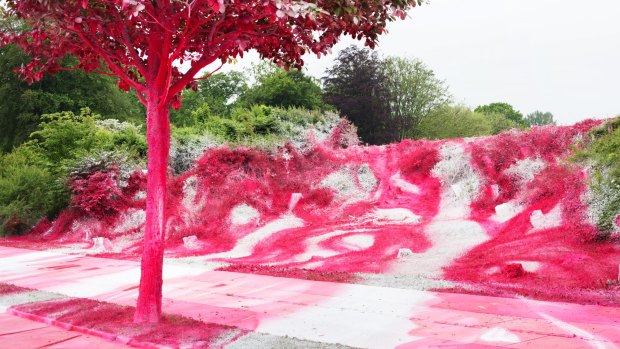
The Present and The Future exhibition at Aros.
When I attended Tina Dickow's Big is Beautiful show at Musikhuset Aarhus, the age range stretched from teenager to pensioner, all together to see the singer's heroic homecoming. Though she now lives in Iceland and performs internationally, Dickow was born and raised in Aarhus, and to give her show an extra sense of localism, she was backed by an awesome 400-strong choir, gathered from groups across the 19 municipalities participating in the ECC. Home-grown with international appeal – that is perhaps the best definition of a successful European Capital of Culture.
During the preparations for 2017, Matthews consulted with organisers from other years of culture gone by. That was useful, but the year also had to be distinctly Danish – distinctly Aarhus. "By default, the [winning city] has never done anything of this size before [and] each year is completely context specific – they really are about the city or region that you're delivering the year in."
And naturally things are supposed to be simultaneously local and international with temporary ideas leading to permanent change. The city's profile and confidence should both increase. Organisers say these things, or something very like them, every year, but really, when you strip away all the marketing talk, what's the point? Matthews doesn't shy away from the question. In fact, I suspect she's been waiting for it. Not seeming to draw breath, she replies at length: "People argue that they're archaic, or that no one really uses them, or if you ask someone what was the Capital in 2011 they can't tell you. But actually that's not the point of them. For the people in the cities, they never forget. And that aside, the aim and the purpose of them is to bring the cultures and the citizens of Europe closer together – to have a greater understanding of how we're the same and, actually, how we're really different. I think it's incredibly important now as we see fracturing, people pulling away from understanding, and building more and more barriers, rather than taking them down."
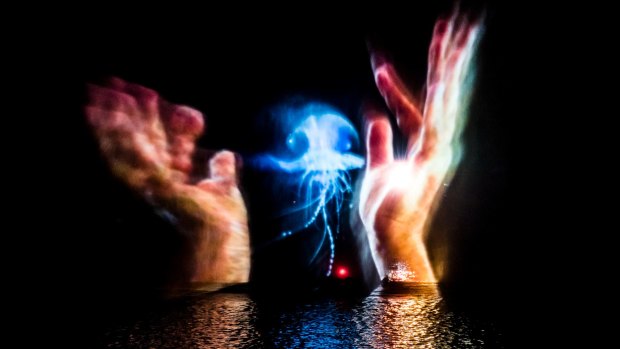
A show on the water at Aarhus.
TRIP NOTES
MORE
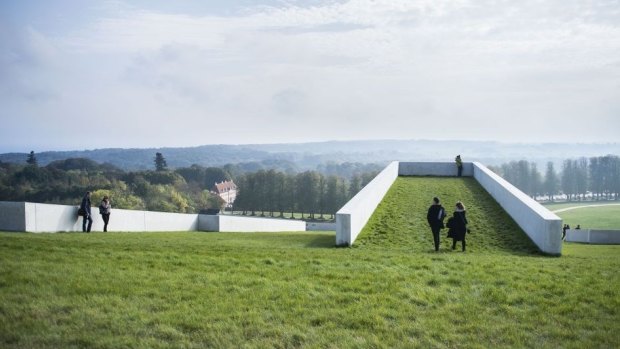
Moesgaard Museum.
VISIT
Check the Aarhus 2017 website or download its comprehensive app to plan your visit to the European Capital of Culture. Also, be sure to get an AarhusCARD, which allows free public transport (including airport transfer) as well as entrance to 21 experiences and attractions around the city. See aarhus2017.dk
FLY
Qantas/Emirates and Qatar both offer flights from Sydney, Melbourne and Brisbane to Copenhagen via their Middle Eastern hubs. From there it's a three-hour train ride. Alternatively, fly to London then use budget carrier Ryanair to fly direct to Aarhus from Stansted. See qantas.com.au; qatarairways.com; ryanair.com
Jamie Lafferty travelled at his own expense.
Sign up for the Traveller Deals newsletter
Get exclusive travel deals delivered straight to your inbox. Sign up now.